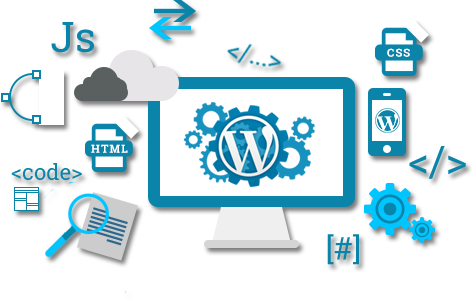Elevating E-commerce Success: The Role of PPC Management Services
.jpg)
We are the ones who create digital success here at Codegurus. Utilizing state-of-the-art technology and inventive thinking, we create customized solutions that improve your brand's online visibility. Our combined experience navigating the digital landscape will drive your growth with our data-driven expertise.
.jpg)
Custom WordPress web development involves creating a unique website tailored to your specific needs and preferences using the WordPress platform as a foundation.
WordPress is a popular content management system (CMS) that offers flexibility, scalability, and a wide range of features.

Here’s a step-by-step guide to understanding the process of custom WordPress web development:
Planning and Requirements Gathering:
Define the purpose and goals of your website.
Identify your target audience.
List the essential features and functionalities you need.
Determine your budget and timeline.
Domain and Hosting:
Choose and register a domain name (your website’s address).
Select a reliable web hosting provider that supports WordPress.
WordPress Installation:
Install WordPress on your hosting server. Most hosting providers offer one-click installations.
Theme Selection or Custom Design:
Choose a pre-made WordPress theme that aligns with your website’s design and functionality requirements.
If you want a unique design, consider hiring a web designer to create a custom theme.
Development Environment:
Set up a development environment, which may include a staging server or a local development environment using tools like XAMPP or WAMP.
Customization and Development:
Customize the chosen theme or develop a custom theme.
Add and configure plugins to extend functionality.
Create custom templates and stylesheets as needed.
Content Creation and Management:
Add and organize content, including pages, posts, images, and multimedia.
Optimize content for SEO (Search Engine Optimization).
Functionality and Features:
Implement specific features and functionalities, such as contact forms, e-commerce, user registration, and membership systems.
Ensure the website is responsive and mobile-friendly.
Testing and Quality Assurance:
Thoroughly test the website for functionality, compatibility, and performance.
Check for cross-browser compatibility.
Conduct usability testing to ensure a positive user experience.
Security:
Implement security measures, such as securing login credentials, setting up firewalls, and using security plugins.
Regularly update WordPress, themes, and plugins to patch vulnerabilities.
Performance Optimization:
Optimize website speed by compressing images, minifying scripts, and using caching plugins.
Implement best practices for SEO to improve search engine rankings.
Content Management and Training:
Train content creators or administrators on how to manage and update the website.
Create documentation for ongoing maintenance
Post-Launch Maintenance:
Continuously update and maintain the website, including content updates, security patches, and plugin updates.
Monitor website performance and user feedback to make improvements.
Marketing and Promotion:
Develop a marketing strategy to drive traffic to your website, such as social media promotion, email marketing, and SEO optimization.
Analytics and Monitoring:
Implement analytics tools to track website traffic and user behavior.
Use data to make informed decisions and improvements.
Custom WordPress web development is an ongoing process that requires attention to detail, continuous improvement, and a focus on meeting your specific business or personal objectives.
It’s essential to work with experienced developers and designers to create a website that aligns with your goals and provides a great user experience.
Comments
Post a Comment